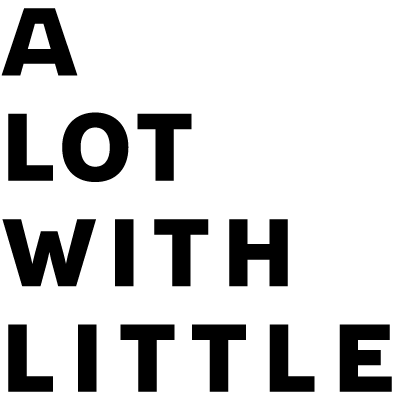About
In a world where unpredictable events and natural disasters increasingly affect our living conditions, and where the building industry is responsible for nearly 40% of global carbon emissions, the responsibility of architects has never been as critical as it is today. Indifference to the overwhelming consequences of climate change is not an option. With limited time, money and resources at our disposal, we urgently need new sustainable ways to design and produce good architecture. An architecture led by societal needs, and made with the resources at hand, that responds to local culture, local economy and the environment. An architecture conceived ethically and responsibly, that cares for our future.
A Lot With Little showcases the work of international architects from the Global North and the Global South, engaged in sustainable solutions for housing, education, transformation of existing buildings and disaster-relief. It features projects with a social dimension that have had a positive impact on the community. The contributing architects provide multiple interpretations of a common mindset, overcoming a lack of resources with creative ingenuity.
A multichannel film installation showcases selected projects in their existing settings, alongside interviews with the architects themselves. The exhibition offers an insight into the design challenges, enabling the visitor to experience the feeling of inhabiting the spaces, instead of merely responding to their visual appeal.
Using film as the medium allows a sustainable approach to presenting architecture without the need for physical object transportation or generating waste, making it fully accessible worldwide. Visitors embark on an extraordinary journey, discovering the profound impact of architecture on our lives.
The Team
Curator Noemí Blager and filmmaker Tapio Snellman reunite after their successful four-year global tour of the exhibition Lina Bo Bardi: Together, collaborating once again with graphic designer Micha Weidmann who designed the accompanying book, and composer Daniel Nolan, whose music adds a distinctive sonic dimension to the exhibition.
Noemí Blager
Curator
Noemí Blager is a London-based architect and curator. After graduating from the University of Buenos Aires in 1985, she settled in Barcelona where she worked on various public and private projects.
In 1994 she moved to London, initially working as a consultant for the building and design industries, returning to architecture practice in 2006. During a project in Brazil, Noemí discovered the legacy of Italo-Brazilian architect Lina Bo Bardi (1914–1992). Inspired by the social dimension of Lina’s work, Noemí mounted the exhibition Lina Bo Bardi: Together which opened at the British Council in London in 2012 and went on to tour internationally for the next four years. In 2020 she published the book Lina Bo Bardi: Together.
Former acting director of The Architecture Foundation, Noemí was on the Design Museum’s curatorial board and co-director of the 2014 London Festival of Architecture.
A speaker at numerous international conferences including: Design Museum, ICA and RIBA in London, AIA NY, ArkDes Stockholm and IKA Vienna, she is also a regular guest lecturer and critic at Harvard GSD, IIT Chicago, AA, RCA and CASS in London amongst others.
Tapio Snellman
Filmmaker
Tapio Snellman Born in Helsinki, Finland, London-based Tapio is a filmmaker with a background in architecture, whose work spans a wide creative realm, encompassing directing, cinematography, editing, motion graphics and 3d animation . Work includes self-initiated conceptual films dealing with urban landscapes, as well as commissioned films, experimental 3D animation and documentaries.
His film installations have been exhibited widely and have featured at venues such as the Victoria & Albert Museum, The Hayward Gallery, The Guggenheim Museum in New York, Kiasma in Helsinki, Tate Modern and numerous times as part of the Venice Architecture Biennale. Furthermore, Tapio has created video designs and virtual sets for theatre, dance and opera, most notably at the Royal Opera House in Amsterdam under the direction of choreographer Sasha Waltz.
During his time as part of the creative partnership neutral, Tapio engaged in collaborations on animation and film projects with architects such as Herzog & de Meuron, Zaha Hadid, Steven Holl, OMA and David Chipperfield.
Academic work includes teaching at universities, including at the Architectural Association in London, The Southern California Institute of Architecture (SCI-Arch) in Los Angeles, the Federal Institute of Technology (ETH) in Zurich and the São Paulo School of Architecture and Urbanism (FAUUSP).
DANIEL NOLAN
COMPOSER
Daniel Nolan is a self-taught Composer and Sound Designer from London, with 25 years production experience.He’s worked on a range of projects from scoring Secret Cinema’s 28 Days Later experience to the Sound Design for the Darren Aronofsky & Nutopia Produced, blue-chip, series: One Strange Rock. He delights in writing for multiple genres from Classical to Electronic and even Death Metal.
Micha Weidmann
Graphic Designer
Micha Weidmann is founder and creative director of his eponymous London-based art direction and design studio. Micha Weidmann Studio has been based in London since 2001. Weidmann helps creators of high-end products and properties develop their branding. He also advises galleries and design businesses on their exhibitions, publications, packaging and online presence.
Weidmann has worked with a range of clients including Dezeen, Tate Modern, Foster + Partners, The Royal Academy of the Arts, Fendi, Zaha Hadid, the Design Museum, Belmond and British Land.
Press
Stylepark Magazine, 10.12.23
Building for the Future by Anna Moldenhauer
BNN, 07.02.24
Prague’s CAMP Hosts ‘A Lot With Little’
RTVE Audio, 24.12.24
Arquitecturas que hacen mucho con poco
Radio Prague International, 07.02.24
“These designs are bold”: new CAMP exhibition gets its debut
Archdaily, 13.2.24
A Lot with Little at Prague’s CAMP
Amazing Architecture, 14.2.24
From locally responsible to globally sustainable: A Lot With Little
Gooood, 21.2.24
A Lot With Little exhibition, from locally responsible to globally sustainable
Scale Magazine, 22.2.24
Architecture that cares for our future: A Lot With Little
Arte Al Día, 22.2.24
Innovating with environmental consciousness
Newsweek Argentina, 20.03.25
La arquitectura como factor de transformación y resistencia




